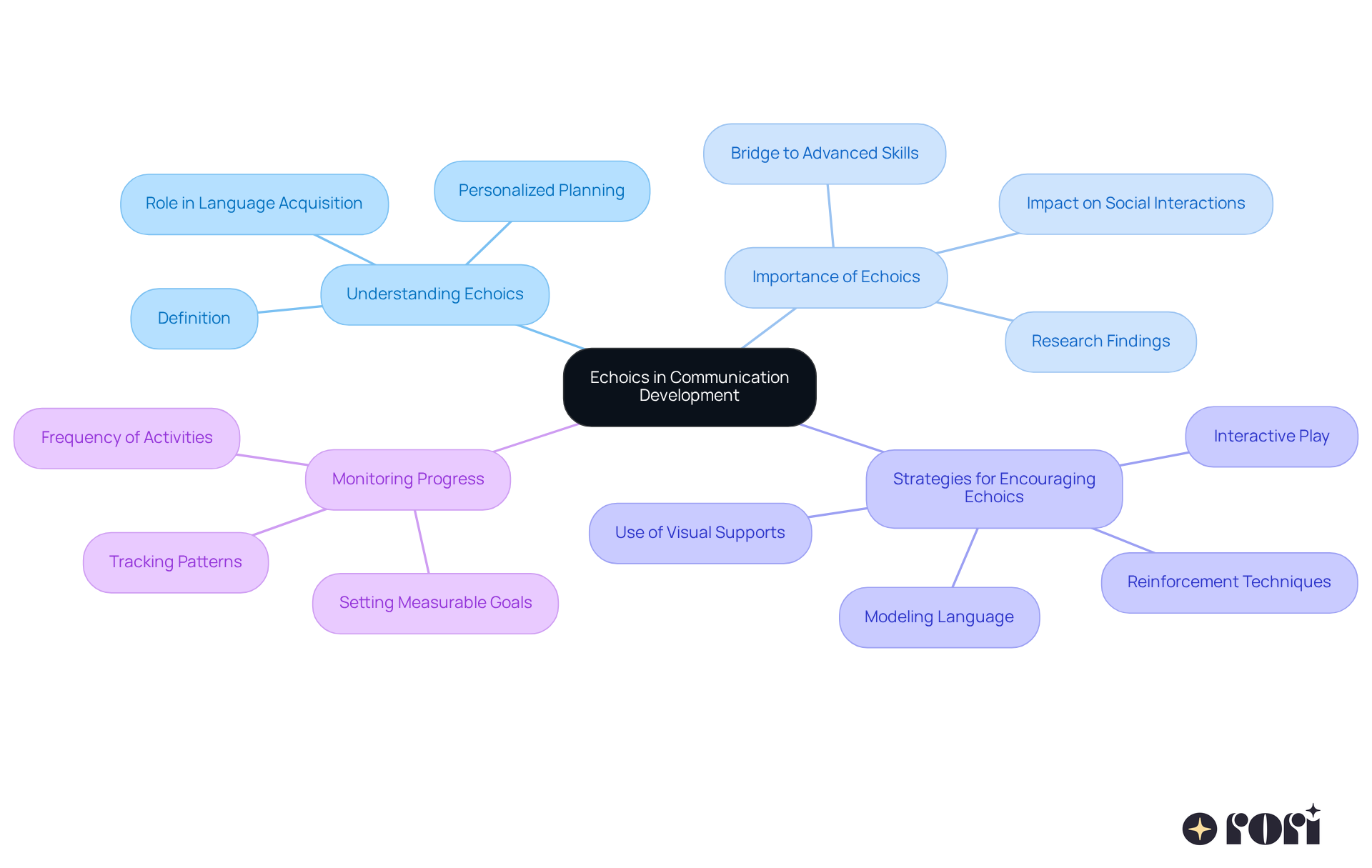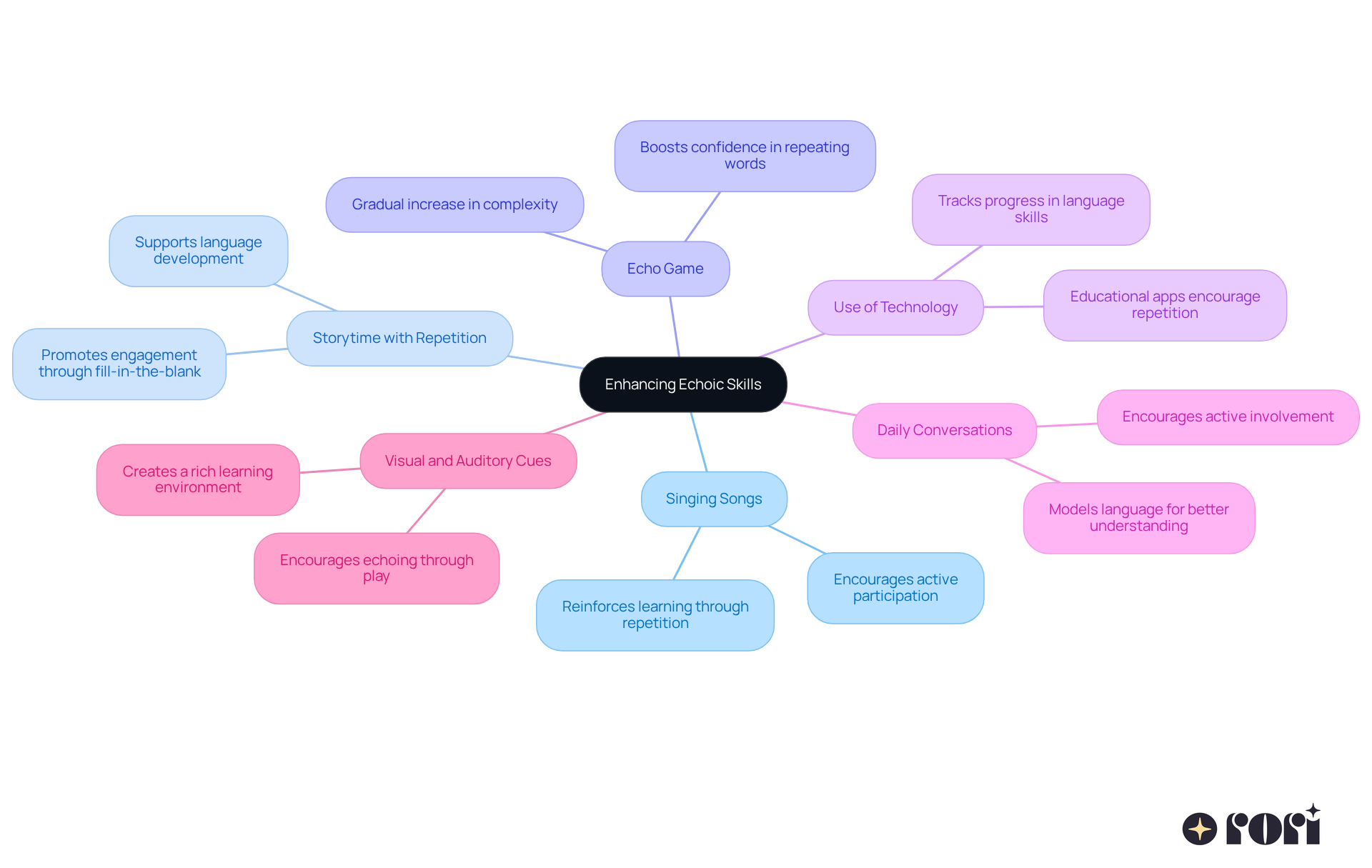This article dives into how parents can effectively support their children's communication skills using the VB-MAPP echoics framework. It highlights just how crucial echoic skills are for language development. By engaging in structured activities and regular assessments, parents can really help their kids imitate speech. This not only boosts their communication abilities but also enhances their social interactions.
Imagine sitting down with your child, playing a fun game that encourages them to repeat words or phrases. It’s a simple yet powerful way to foster their skills! Regular check-ins can help you see their progress and adjust activities to keep things fresh and engaging.
Let’s explore this together! By taking these steps, you’re not just helping your child learn to speak; you’re opening doors to better conversations and friendships. We’re here to help you every step of the way!
Navigating the journey of communication development for children with autism can feel a bit overwhelming at times. But remember, it’s also filled with the promise of connection and understanding! 🌟 The VB-MAPP echoics framework is here to help, offering parents a structured way to boost their child's verbal skills and social interactions.
But let’s pause for a moment. What challenges do caregivers face when trying to implement these strategies? And how can you ensure your child truly thrives in their communication journey? This guide is all about exploring the essential role of echoics in fostering language development. We’ll share practical insights and activities that empower you to support your child's growth every step of the way. Let’s explore this together!
The VB-MAPP echoics (Verbal Behavior Milestones Assessment and Placement Program) is an essential tool for children with autism and developmental disabilities. It focuses on VB-MAPP echoics and interaction skills, which aids in tracking progress and identifying areas that may require additional attention. This structured approach is truly invaluable for effective intervention!
The importance of assessment is emphasized as parents can truly understand their child’s expressive skills and establish realistic developmental goals by utilizing VB-MAPP echoics. This organized method allows for targeted interventions, which can significantly enhance the learner's educational journey and boost their social skills.
Tracking progress through regular check-ins with the VB-MAPP echoics enables parents and clinicians to closely monitor development. This means they can make timely adjustments to treatment plans, ensuring that the young person gets the personalized support they need as they grow.
Let’s explore this together! Your involvement can make a world of difference!
![]()
Echoics are all about the ability to repeat or imitate sounds, words, or phrases that we hear. This skill is super important for young individuals with autism, especially when it comes to developing interaction skills. In the context of Applied Behavior Analysis (ABA) therapy, which is tailored to each person's unique needs, vb mapp echoics provide a solid foundation for communication.
Understanding Echoics: So, what exactly are echoics? They involve both hearing and mimicking speech. When a young learner successfully echoes a word or phrase, they’re not just practicing their speech; they’re also reinforcing their understanding of language. This sets the stage for future communication. Personalized planning plays a big role here, as each strategy is customized to fit the individual’s strengths and challenges.
Importance of Echoics in Communication: Echoics serve as a bridge to more advanced language skills. When kids master vb mapp echoics, they are able to progress to spontaneous speech and conversational abilities. Research shows that early vocal responses can really boost language acquisition, leading to better verbal skills and social interactions. And let’s not forget about early intensive behavioral intervention (EIBI) — it’s been proven to enhance learning, verbal, and social skills in individuals with autism.
Strategies for Encouraging Echoics: Parents, you can help foster echoic skills with some evidence-based strategies:
Monitoring Progress: Keep an eye on your child’s echoic responses over time by setting measurable goals. This helps you spot patterns and areas that might need extra support, allowing you to adjust their learning strategies as needed. For instance, kids who engage in echoic activities 3-5 times a week often show better retention and communication skills. Plus, research indicates that 90% of youth make significant progress when they receive the recommended hours of intervention. This really highlights how crucial caregiver involvement is in the therapeutic process.
Let’s explore this together! We’re here to help you every step of the way!

Enhancing your little one’s skills in vb mapp echoics can be a fun journey, and as a caregiver, you play a crucial role in this process. By weaving practical activities into your daily routines, you can make a big difference. Here are some engaging ideas to consider:
Singing Songs: Pick out simple, catchy tunes that your child loves. Singing together not only makes learning enjoyable but also encourages them to echo the lyrics. It’s a great way to reinforce their learning through active participation!
Storytime with Repetition: Choose books with repetitive phrases or rhymes. When you read, pause before the repeated phrase and invite your little one to fill in the blank. This promotes vb mapp echoics and helps you gauge their engagement.
Echo Game: Try a fun game where you say a word or phrase, and your child repeats it back. Start with easy words and gradually increase the complexity as they get the hang of it. This supportive environment boosts their confidence by utilizing vb mapp echoics!
Use of Technology: Don’t shy away from educational apps or videos that focus on language development. Many resources encourage kids to repeat words and phrases, making it a delightful way to practice vb mapp echoics while you keep track of their progress.
Daily Conversations: Bring echoics into your everyday chats. For example, when asking your child to help with a task, model the language you want them to use and encourage them to repeat it. This active involvement can lead to better behavioral outcomes and informed decision-making.
Visual and Auditory Cues: Use toys or objects that make sounds or have specific names. When playing with these items, say the names out loud and encourage your little one to echo them. This creates a rich learning environment that supports their communication development.
By integrating these activities into your child’s routine, you’re not just fostering their vb mapp echoics; you’re also enhancing your ability to support their overall growth. Plus, it can help reduce stress and improve family dynamics. Let’s explore this together!

Understanding and implementing the VB-MAPP echoics framework is so important for helping children with autism and developmental disabilities develop their communication skills. This structured approach not only helps track progress but also empowers parents to connect meaningfully with professionals, ensuring their child gets the tailored support they need. When caregivers grasp the significance of echoics, they can truly play a pivotal role in their child's language development journey.
The article highlights the many components of the VB-MAPP, emphasizing how echoics serve as a foundational skill for communication. Strategies like:
are essential for encouraging echoic responses. Plus, regularly monitoring progress allows for timely adjustments in learning strategies, ensuring that each child can thrive in their communication abilities.
Ultimately, enhancing echoic skills isn’t just about improving speech; it’s about nurturing a child's overall development and enriching family dynamics. By actively participating in their child's learning process and using the practical activities outlined, parents can make a significant impact on their child's growth. Embracing this approach creates a supportive environment that leads to meaningful advancements in communication and social interaction, making a lasting difference in their lives.
Let’s explore this journey together! Your involvement can truly make a difference!
What is the VB-MAPP framework?
The VB-MAPP (Verbal Behavior Milestones Assessment and Placement Program) is a tool designed for children with autism and developmental disabilities, focusing on echoics and interaction skills to track progress and identify areas needing additional attention.
What are the key components of the VB-MAPP?
The VB-MAPP includes five key components: Milestones Assessment, Barriers Assessment, Transition Assessment, Task Analysis, and Placement Guidelines. Each component helps in understanding a child's verbal behavior and interaction skills.
How does the VB-MAPP assist parents and clinicians?
The VB-MAPP helps parents understand their child's expressive skills and set realistic developmental goals, allowing for targeted interventions that enhance the child's educational journey and social skills.
Why is tracking progress important in the VB-MAPP framework?
Regular check-ins with the VB-MAPP enable parents and clinicians to monitor development closely, allowing for timely adjustments to treatment plans and ensuring personalized support for the child.
How can understanding the VB-MAPP framework improve collaboration between parents and clinicians?
When parents are familiar with the VB-MAPP assessment, they can engage in meaningful discussions about their child's progress, share insights about their learning environment, and contribute to more effective intervention strategies.